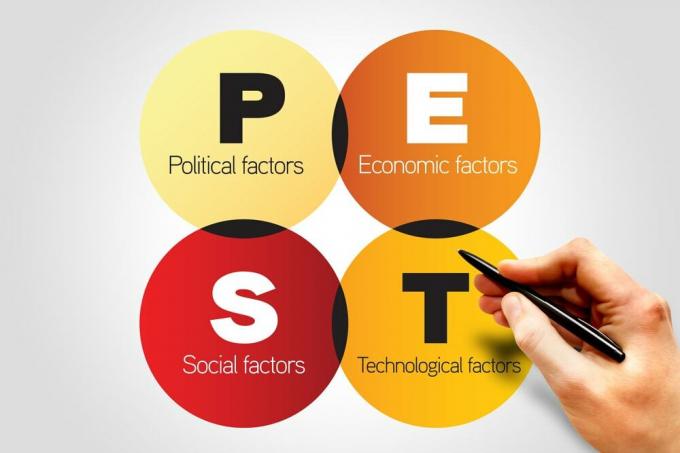The Competitive Profile Matrix (MPC) is a tool that compares the company and its rivals and reveals their relative strengths and weaknesses.

Advertisements
In order to better understand the external environment and competition in a particular industry, companies often use MPC. The matrix identifies a company's top competitors and compares them through the use of the industry's critical success factors. The analysis also reveals the strengths and weaknesses of the competitors, therefore the company would know, which areas to improve and which areas to protect. Below is an example of the MPC matrix:
| Company A | Company B | Company C | |||||
| Critical factors of success | Weight | Rating | Score | Rating | Score | Rating | Score |
| Brand reputation | 0.13 | 2 | 0.26 | 3 | 0.39 | 1 | 0.13 |
| Product integration level | 0.08 | 4 | 0.32 | 3 | 0.24 | 1 | 0.08 |
| Product range | 0.05 | 3 | 0.15 | 1 | 0.05 | 2 | 0.10 |
| New successful introductions | 0.04 | 3 | 0.12 | 3 | 0.12 | 3 | 0.12 |
| Market share | 0.14 | 2 | 0.28 | 4 | 0.56 | 4 | 0.56 |
| Sales per employee | 0.08 | 1 | 0.08 | 2 | 0.16 | 3 | 0.24 |
| Low cost structure | 0.05 | 1 | 0.05 | 3 | 0.15 | 4 | 0.20 |
| Variety of distribution channels | 0.07 | 4 | 0.28 | 2 | 0.14 | 2 | 0.14 |
| Consumer retention | 0.02 | 2 | 0.04 | 4 | 0.08 | 1 | 0.02 |
| Technological capacity | 0.11 | 3 | 0.33 | 4 | 0.44 | 4 | 0.44 |
| Online sales | 0.15 | 3 | 0.45 | 3 | 0.45 | 4 | 0.60 |
| Promotions | 0.08 | 1 | 0.08 | 2 | 0.16 | 1 | 0.08 |
| Total | 1.00 | – | 2.44 | – | 2.94 | – | 2.71 |
Critical Success Factors (CSF) are the key areas, which must be brought to the highest possible level of excellence if the company is to be successful in a particular industry. These factors vary between different industries or even between different strategic groups and include both internal and external factors. In the example, 11 FCEs have been included, which is generally not enough. The following list offers some of the FCEs at the generic level. This list is not definitive as specific factors of the industry under study must be included:
Advertisements
Market share
Product quality
Customer service
Consumer satisfaction
Profit margin
Employee retention
Technological capacity
Price competitiveness
Complementary products
Online sales
Production efficiency
Product design
Vertical integration level
Supply chain integration
In this article you will find:
Understanding the MPC Matrix
Weight in the matrix
Each critical success factor should have a relative weight ranging from 0.0 (low importance) to 1.0 (high importance). The number indicates the importance of the factor in the industry. If there were no assigned weights, all factors would be equally important, which is an impossible scenario in the real world. The sum of all the weights must equal 1.0. Independent factors should not be given too much emphasis (assigning a weight of 0.3 or more) because success in an industry is rarely determined by one or a few factors.
Advertisements
The Rating
The rating in the MPC refers to how well companies are doing in each area. They range from 4 to 1, where 4 means great strength, 3 - minor strength, 2 - minor weakness and 1 - great weakness. Valuations, as well as weights, are subjectively assigned to each company. This process can be made easier through benchmarking. Benchmarking reveals how well companies are doing compared to one another or the industry average. Remember that parent companies can be assigned equal ratings by the same factor. For example, if company A, B, and C have market shares of 25%, 27%, and 28% respectively, accordingly, they will all receive a rating of 4 instead of receiving ratings of 2, 3, and 4.
Score
The score is the result of multiplying the weight by the rating. Each company receives a score on each factor. The total score is simply the sum of all the individual scores. The company that receives the highest total score is relatively stronger than its competitors. In our example, the best performer in the market should be Company B with 2.94 points.
Advertisements
Have you carried out this type of analysis in your market?


